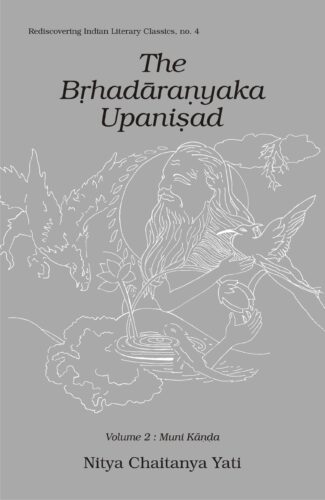

The Saundaryalahari ...
The Saundaryalahari (Anandalahari)
by: Nitya Chaitanya YatiThis book comprises the first part of Saundaryalahari, popularly known as Anandalahari. The text is a protolinguistic composition using a pictorial language of images. The absolute joy of Advaita is presented subjectively as ananda and objectively as saundarya. For the contemplation of the Shri Chakra, 53 meditations have also been provided.
Original price was: ₹1,295.00.₹1,166.00Current price is: ₹1,166.00.
ISBN: 9788124608104
Year Of Publication: 2015
Edition: 2nd Revised edition
Pages : xix, 259
Language : English
Binding : Hardcover
Publisher: D.K. Printworld Pvt. Ltd.
Size: 23
Weight: 1000
This book comprises the first part of Saundarya Lahari (The Upsurging Billow of Beauty), popularly known as Ananda Lahari, covering the first forty-one verses.
This poetic work has fascinated generations of scholars and laypersons with the sublime beauty of the verses in praise of the Devi, but also puzzled people by the authorship of Shankara. The text is a protolinguistic composition using a pictorial language of images. Beauty, elevated to the highest level, provides content to the otherwise abstract notion of the Absolute. The absolute joy of Advaita is presented subjectively as ananda and objectively as saundarya.
This tenth-century hymn to the Devi is a poetic restatement by the philosopher Shankara of his strict Advaita Vedanta monism. In a compelling series of verses, Shankara draws in many strands of Indias heritage and braids them into a vision of luminous, transcendent Beauty.
The present commentary by Guru Nitya Chaitanya Yati grew out of his class of intimate meditations. He has integrated the academic disciplines of aesthetics, linguistics, and psychology with contemplation into a comprehensive study of creative manifestation. The heterodox Tantric Shri Vidya schools are centered on the realistic worship of the Devi or Goddess and the Shri Chakra. Keeping in line with contemplation, the Appendix provides 53 meditations on the Shri Chakra.
Acknowledgment
Guide to Sanskrit Pronunciation
Foreword
Photographic Credits
Introduction
Verse One
Verse Two
Verse Three
Verse Four
Verse Five
Verse Six
Verse Seven
Verse Eight
Verse Nine
Verse Ten
Verse Eleven
Verse Twelve
Verse Thirteen
Verse Fourteen
Verse Fifteen
Verse Sixteen
Verse Seventeen
Verse Eighteen
Verse Nineteen
Verse Twenty
Verse Twenty-one
Verse Twenty-two
Verse Twenty-three
Verse Twenty-four
Verse Twenty-five
Verse Twenty-six
Verse Twenty-seven
Verse Twenty-eight
Verse Twenty-nine
Verse Thirty
Verse Thirty-one
Verse Thirty-two
Verse Thirty-three
Verse Thirty-four
Verse Thirty-five
Verse Thirty-six
Verse Thirty-seven
Verse Thirty-eight
Verse Thirty-nine
Verse Forty
Verse Forty-one
Appendix: Meditations on Shrichakra
Verse One
Verse Two
Verse Three
Verse Four
Verse Five
Verse Six
Verse Seven
Verse Eight
Verse Nine
Verse Ten
Verse Eleven
Verse Twelve
Verse Thirteen
Verse Fourteen
Verse Fifteen
Verse Sixteen
Verse Seventeen
Verse Eighteen
Verse Nineteen
Verse Twenty
Verse Twenty-one
Verse Twenty-two
Verse Twenty-three
Verse Twenty-four
Verse Twenty-five
Verse Twenty-six
Verse Twenty-seven
Verse Twenty-eight
Verse Twenty-nine
Verse Thirty
Verse Thirty-one
Verse Thirty-two
Verse Thirty-three
Verse Thirty-four
Verse Thirty-five
Verse Thirty-six
Verse Thirty-seven
Verse Thirty-eight
Verse Thirty-nine
Verse Forty
Verse Forty-one
Verse Forty-two
Verse Forty-three
Verse Forty-four
Verse Forty-five
Verse Forty-six
Verse Forty-seven
Verse Forty-eight
Verse Forty-nine
Verse Fifty
Verse Fifty-one
Verse Fifty-two
Verse Fifty-three
Index
















